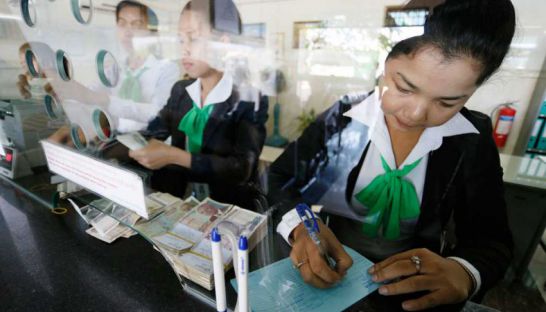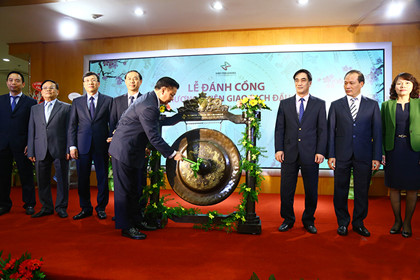MFIs extend reach with branchless banking
MFIs extend reach with branchless banking
Branchless banking, including mobile banking, is one of the hottest trends in Cambodia’s microfinance industry, helping financial institutions deliver their products conveniently and affordably to people living in rural areas, industry insiders said yesterday.

Speaking at the Mekong Financial Inclusion Forum in Phnom Penh yesterday, Chea Phalarin, CEO of Amret Microfinance, said while financial institutions have expanded their branch networks into Cambodia’s provinces, many low-income families in remote areas still have limited access to financial services. He said branchless banking services were proving to be a game-changer, giving these families convenient access to a wide range of financial products.
Phalarin said Amret’s “mobile savings collection” service, where the microlender’s staff is dispatched to a customer’s home or business place to collect deposits or deliver cash withdrawn from their account, has been warmly received since its launch early last year. He said 34,000 customers are now using the service, with total deposits exceeding $3.1 million.
“By launching our mobile savings collection, those who have low incomes and just $10 or $20 to save but never save at banks, now they can deposit any small amount of money through our mobile tellers,” he said, adding that customers receive confirmation of the transactions and an updated balance in an SMS sent to their mobile phone.
Phalarin said extending financial services to this segment of the population benefits society, as it provides them with money for future investment, their children’s education or building a house, as well as other benefits that can improve their living standard.
AMK Microfinance offers a similar service through more than 2,400 agents stationed in villages nationwide to assist customers with their banking needs.
Its chief executive, Kea Boran, said providing branchless banking services to poor customers in rural areas is a major tool for promoting financial inclusion in Cambodia, as even with their extensive networks of branches, microfinance institutions cannot reach every village.
“Our agents provide more people, particularly low-income people in remote areas, with access to formal financial services,” he said.
To date, more than 100,000 customers have utilised AMK’s agent-based mobile banking service, with total deposits of about $500,000, according to Boran.
“If a customer has 1,000 riel to 2,000 riel and wants to deposit it at a bank, they don’t dare to do so because they feel shameful that it is such a small amount of money,” he said.
“We want people to save, even this small amount, so we launched our [agent-based] mobile banking system to encourage them to save.”
However, the cost of financial inclusion can be high, and microfinance institutions face steep operating costs for rolling out branchless services in rural Cambodia.
According to Phalarin, Amret lost $400,000 per in the first year of launching its mobile savings collection service and expects to lose $300,000 this year. Yet it remains committed.
“We expect that we will reach the break-event point after five years,” he said.














